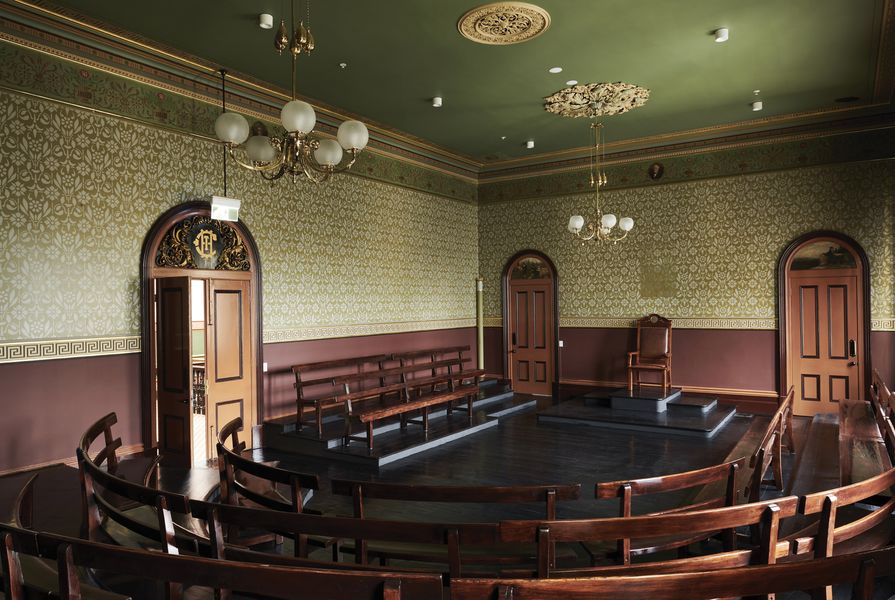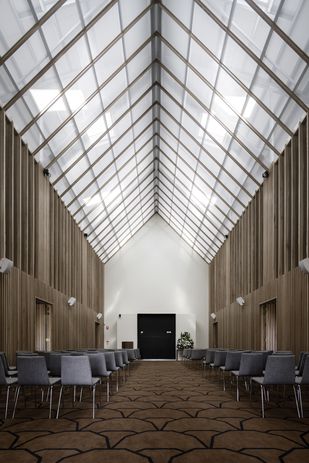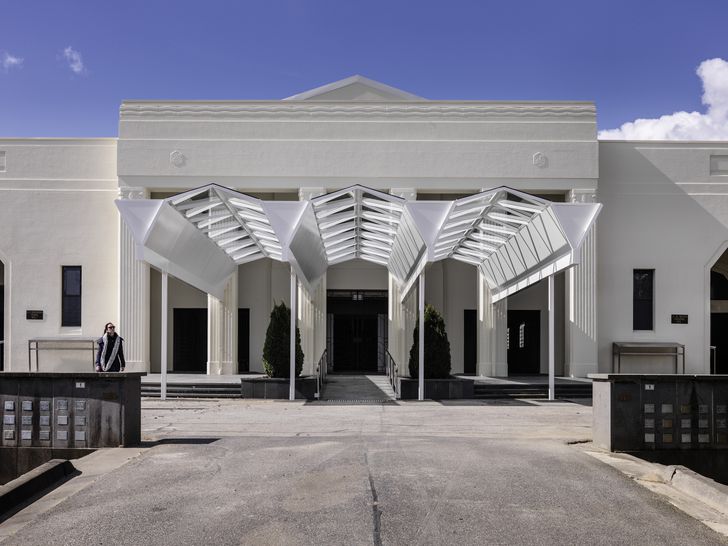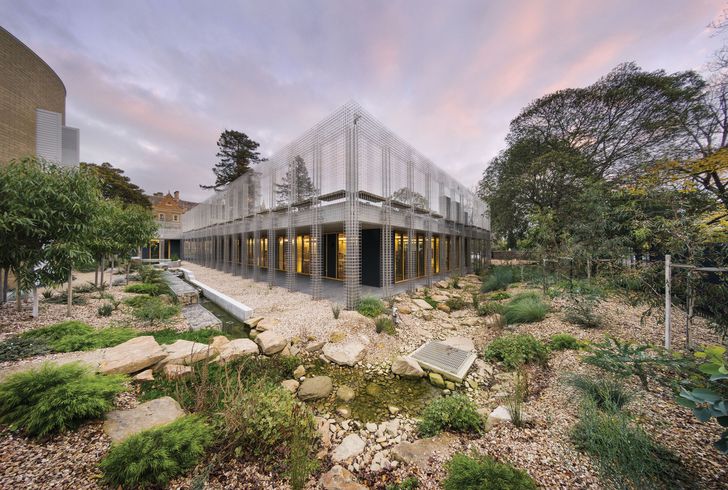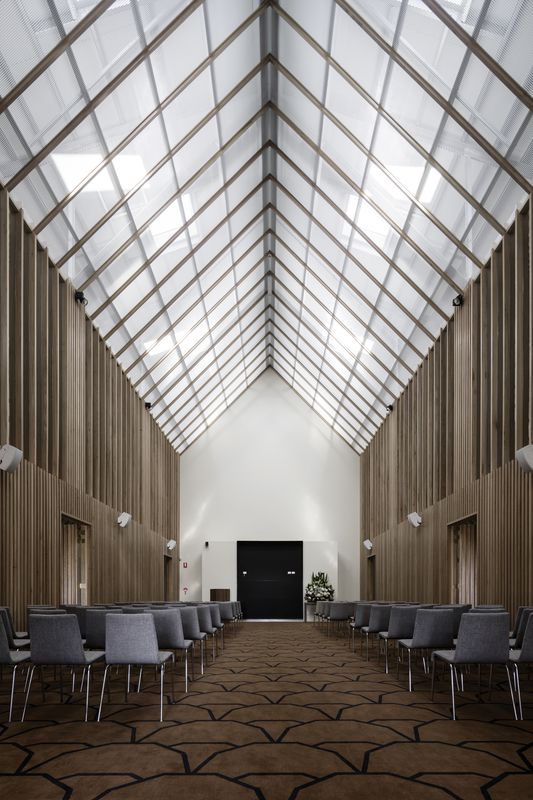Melbourne-based architecture practice Lovell Chen is home to one of the most extensive archives of architectural, heritage and conservation knowledge in Australia. Even so, it would be wrong to characterize the firm’s work over the past four decades in these terms alone. Lovell Chen has been playing the long game, eschewing the limelight of design heroics in favour of rigorous research and design and collaborative processes. While many architects appear to espouse alternative practice models, Lovell Chen has actually realized one. Under the seemingly polite guise of heritage architecture, this firm has, over time, developed a compelling and radical practice model: the result of a complex interaction between ever-evolving expertise in design, masterplanning, heritage, conservation, construction and sustainability. It is a remarkable story.
The firm began as Allom Lovell and Associates in 1981. Peter Lovell had graduated from the University of Melbourne with a Bachelor of Building degree and an interest in best-practice building conservation. Kai Chen joined in 1991, having meticulously crafted a number of residential commissions in his own practice, Robinson Chen. That body of work avoided the easy clichés of the modern bourgeois house in favour of exploring space, colour and light. The firm became Lovell Chen in 2005.
Since then, the firm has grown to include five more principals: Kate Gray, Adam Mornement, Anne-Marie Treweeke, Milica Tumbas and Katherine White. Together, the seven principals attest to the firm’s singular diversity, combined expertise and no-nonsense principles of governance. As a result, the firm is able to deploy its embedded knowledge to resolve strategic issues, hard-nosed negotiations and intractable trade-offs. It is almost as if Lovell Chen has knowingly designed itself to confront the wicked problems and ethical quagmires inherent to contemporary practice.
At the Boyd and Renowden Chapels at the Springvale Botanical Cemetery in Melbourne, clarity was Lovell Chen’s primary aim.
Image: Trevor Mein
But there is more to it than this. Lovell Chen has not only been instrumental in shaping Melbourne’s collective memory as a city, it has also been its custodian. There are few heritage buildings in the city that have not at some point had the involvement of Lovell Chen, be it in masterplanning, the preparation of conservation management plans or intricate conservation work. Nor are the firm’s interests merely bound to Melbourne’s nineteenth-century fabric. Lovell Chen is acutely aware of the circumstances of Australia’s other cities and regional centres, the country’s modernist heritage as well as its histories of Indigenous and colonial landscapes. As would be expected of a firm of this intellectual depth, Lovell Chen is wary that adaptive re-use has become a fashionable label, acknowledging that not all buildings deserve adaptive re-use, nor is everything valuable; sometimes, what is removed is as important as what is kept for the future.
All of this is brought together in design outcomes that surprise through their grace. This is not the work of cookie cutters, nor of stylists who deploy a sly language regardless of the program, nor the results of a larger-than-life formalism of irony. The practice’s approach is characterized by a process of research, design iteration and a search for detailed constructional solutions, depending on the project context. This is a group of architects who still know how to detail.
The firm’s conservation skills are evident in the work to Trades Hall in Carlton, a significant site in the histories of trade unions in Victoria and the Australian Labor Party. The council chamber, built in 1891, had been destroyed by fire in 1960 and refurbished in what might be described as a kind of utilitarian moderne style of that time: a flat white ceiling, brownish timber panels and some green modern textures. Lovell Chen has reversed the 1960s work and highlighted the hall’s original configuration. The result includes a new three-sided balcony and arcaded side galleries. It is a subtle, surgical and even joyful intervention.
A steel and glass structure has been added to provide shelter at the front of the chapels; its minimal design allows the 1930s portico to retain its visual impact.
Image: Trevor Mein
The practice’s design skill is evident in its work at the Bendigo Soldiers Memorial Institute. This project involved conservation work to a 1921 Renaissance revival-style building and the addition of a new pavilion. The new addition employs various exterior devices: Corten steel as a single material, tapered massing and laser-cut decorative openings and trabeated rhythms expressed by the placement of the steel sheets. The siting of the new pavilion also allows the immediate landscape of the institute to be better apprehended.
Even more remarkably, this new addition has been constructed according to Passive House principles. The tired old stereotype is that heritage architects are not early adopters, but Lovell Chen has been working with Passive House since 2014. This interest began as an effort to have increased agency in conservation contexts in the face of the whims of service engineers and has thus extended the Passive House principles into typologies beyond housing.
For Lovell Chen, the process of embedding new into old is not about merely making the formalist distinction between old and new. For less adept architects, this binary enables an easy reversibility –when mistakes are revealed later – and assuages the consciences of those architects who avoid difficult choices. In contrast, Lovell Chen enfolds new architectures, functions, fabrics and materials into existing structures in ways that are both visible and invisible. This departure from the old-new binary confers an enormous responsibility on the architect not to blunder, whether through ignorance of the existing fabric or missteps in project implementation. Expert information-gathering and decision-making is critical.
The Wade Institute of Entrepreneurship, in the grounds of Ormond College at the University of Melbourne, combines unconventional teaching spaces with a rooftop tennis court. Photograph: John Gollings.
Image: John Gollings
In going beyond the easy sophistries of the old-new mantra, Lovell Chen has made subtle yet significant contributions to the theory of adaptive re-use practice. Several further projects in the practice portfolio indicate the results of these contributions. At Melbourne’s Regent Theatre, a massive 3.7-metre extension to the front of the dress circle is held in place by a new truss supported by piers hidden inside the existing walls. The result is amazingly seamless. These kinds of interventions require a meticulous focus on services and the associated regimes of regulatory compliance. Another example is the 1930s Boyd and Renowden Chapels at the Springvale Botanical Cemetery, where a new atrium joins the two chapels. At the University of Melbourne’s Ormond College, Lovell Chen has designed a series of projects in a context that includes buildings by Roy Grounds and Frederick Romberg. The largest of these projects is the Wade Institute of Entrepreneurship, a teaching building that explores the intersecting typologies of garden pavilion and cloister. The result is a brilliant riposte to the stuffiness of Grounds’s and Romberg’s mid-century mannerisms.
Research is integral to the practice’s modus operandi. The research infrastructure of the office is outstanding, its library is second-to-none among architecture libraries – containing far more than just architecture books – and the firm is generous in sharing the library’s embodied knowledge with scholars, heritage experts, planners and policymakers. Moreover, unlike many other firms, Lovell Chen actively encourages its staff to be involved in research initiatives, conferences and training programs, and it has a research and development budget that it utilizes for these activities. If only more architects employed a similar research model. In this office, research is not pursued as a veil for self-interested pragmatism or egotistic design. With similar humility, this practice has generously mentored many young architects over time.
Lovell Chen searches for project knowledge grounded in detail and, once found, it articulates the truths that emerge from this context. This process begins with an ethics that never abandons the memories of a city, a place or a landscape. Within the firm there is a culture of modesty that belies its achievements. The result is a poetry based in ethical practice rather than self-centred promotion or hunger for the next social-media metric. This is a firm working to help its clients endure the tumult of future times with joy. This is a practice dedicated to architecture’s long game.
— Peter Raisbeck is a senior lecturer in architectural practice in the Faculty of Architecture, Building and Planning at the Melbourne School of Design and research director of the Association of Consulting Architects.
Source
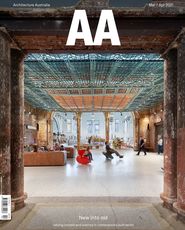
People
Published online: 17 May 2021
Words:
Peter Raisbeck
Images:
Eve Wilson,
John Gollings,
Peter Glenane,
Trevor Mein
Issue
Architecture Australia, March 2021

